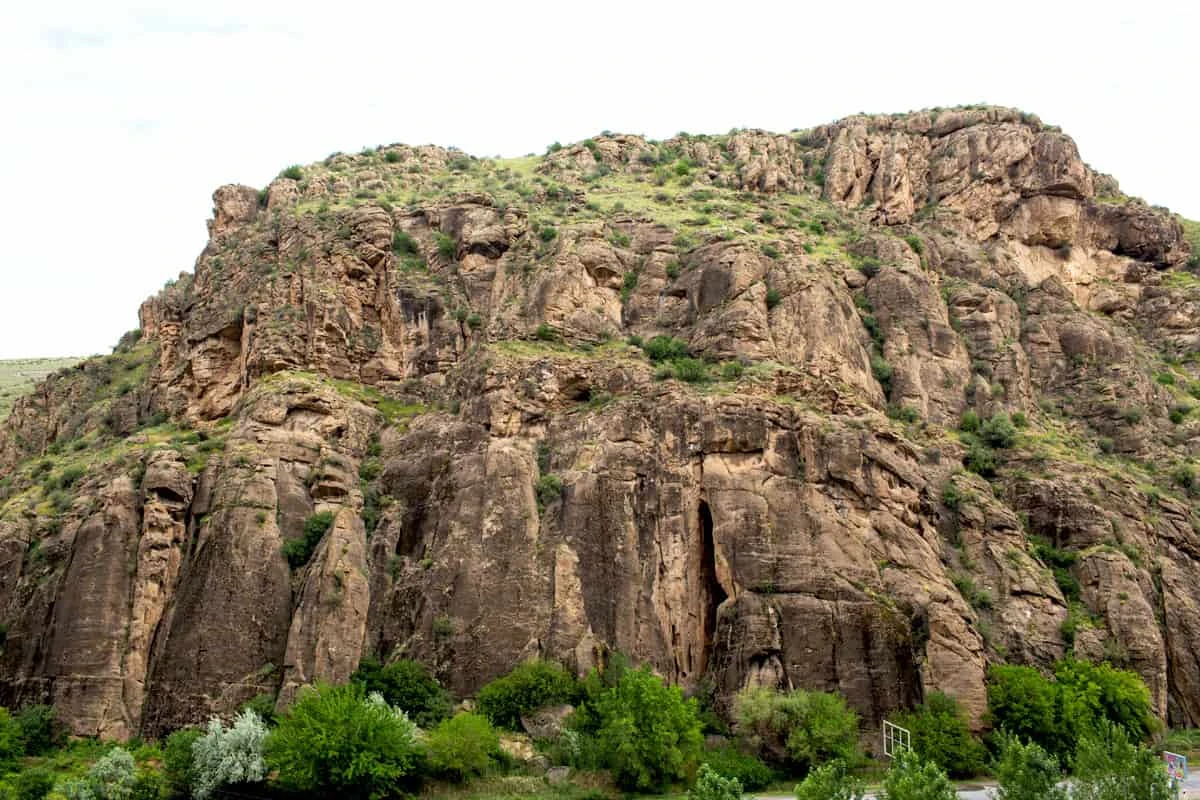Armenia is a real open-air museum. On its territory one can observe medieval monasteries, deep gorges, seething waterfalls, majestic mountains. But to get even better acquainted with the unique nature and history of the country, it is worth going on an underground journey through the caves of Armenia.
Areni-1 (Birds-Cave)
Birds-Cave is the most famous one in Armenia. Visiting it, one will be able to learn how people used to live approximately 6000 years ago. This is the age that scientists estimate the finds discovered here.Some interesting facts about the Birds-Cave:
- it is located at an altitude of 1080 m above sea level;
- the most ancient cultural layer discovered in the cave dates back to the 6th-5th centuries BC;
- the area of Areni's underground halls is about 500 sq. m;
- the exploration of the cave is still ongoing;
- in 2010, the oldest shoe in the world was found here, dating back to ~3500 BC.
It is believed that the shoe was preserved due to the unique cave microclimate and the fact that it was tightly packed with straw. Currently, this exhibit from Areni can be seen in the History Museum of Armenia.
Researchers have proven the fact that in ancient times a winery was set up on the territory of the cave, which is considered the first in the world. Archaeologists have discovered fermentation barrels, presses, as well as vessels for storing wine here.
One can visit Birds-Cave within the scope of a tour. An experienced guide will speak about the history and legends of this amazing place.

Areni-1 (Birds-Cave)
Master Levon's Divine Underground
Master Levon's Divine Underground, or rather, a labyrinth that goes 21 m underground, is located in Arinj village on the outskirts of Yerevan. Tourists are amazed by the decoration of the cave: neat niches, columns, carvings on the walls. It seems as if a whole team of architects worked here. But in fact, a local, Levon Arakelyan, did everything alone. It took him 23 years.It all started quite regularly: in 1985, Levon's wife asked him to equip her with a cellar. The husband began digging the earth, but came across a rock formation. This did not stop him, and he decided to carve a room in the stone.
Over time, the process of creating a cellar captivated Levon so much that he quit his job and devoted himself to the construction of the cave. He chiseled the stone for 18 hours a day, going deeper not more than 10 cm per day.
Ten years later, the master managed to overcome the basalt layer, and the work began to progress faster, for there was softer tuff behind it. Branches appeared from the descent down, and a system of halls was built.In 2008, Levon passed away. But the dungeon he built attracts tourists and preserves the memory of this unique person. Tours of the underground are led by the master's wife and daughter.

Master Levon's Divine Underground
Magel (Magellan) Cave
Magel (Magellan) Cave is one of the largest caves in Armenia. It is a karst cave with many stalactites and stalagmites inside.The natural monument received its name in honor of its discoverer, just an ordinary shepherd Magellan Arakelyan. He was the one to discover the cave in 1980. For the moment, less than 2 km of the latter has been explored, and most of it is impassable.
Scientists have discovered animal remains and ancient tools in the cave halls. Thanks to these findings, researchers have determined that the time of the appearance of the natural landmark dates back to the Neolithic period.
The temperature inside the cave always remains the same – 14 degrees Celsius. Very low arches do not allow a person to rise to his full height, in some areas it is only possible to move by crawling or on your knees.
In addition to a large number of stalactites and stalagmites, the cave is known as a habitat for eight species of bats, six of which are included in the Red Book of Armenia.

Magellan Cave

Cave pearls of the Magellan Cave
Mozrov Cave
Mozrov Cave was discovered in the same year as Magel Cave. During road construction, specialists carried out blasting operations. After one of the explosions, a funnel appeared, opening a hole into the hollow underground space.Mozrov has got a geothermal origin, which means that it was formed due to hot underground springs that used to wash away the soil for a long time. There is very high humidity inside the cave and the stones are covered with a layer of calcite, which makes it difficult to determine the age of the natural monument.
As the cave had no entrance, it was popularly called "Blind". Today, one can get into it by a steep 30 m long descent. The length of the underground passage on the upper tier is ~260 m. There is another tier, the lower one, but it has not yet been explored.
In Mozrov Cave, one can observe a number of stalactites and stalagmites. Some of them, due to their outlines, received names: "Crocodile's Mouth", "Organ", "Mammoth Skull", "Adam and Eve".

Mozrov Cave

Stalactites and stalagmites of the Mozrov Cave
Lastiver Cave
If one wishes to visit a place cut off from civilization, admire mountain gorges, noisy waterfalls and wild forests, then going to Lastiver is a nice idea.The pearl of the area is the cave of the same name. It is located on the vertical slope of the gorge – to get to it, one needs to overcome the path along the edge of the cliff. In the old days, to get to this dungeon, people built stairs from logs. Due to these structures, the cave got its name ("lastiver", literally translated as "up the raft").
The cave system includes 12 halls located on two floors. From the finds discovered inside, scientists were able to determine that in ancient times the cave was inhabited. In addition, there exists an assumption that it was here that local residents hid during the Tatar-Mongol invasion in the 13th-14th centuries.
On the walls of the natural object one can view a variety of bas-reliefs. Among them there is a scene depicting women, which researchers interpret as a wedding ceremony. The author of the bas-reliefs is believed to be a hermit who used to live here.

Lastiver Cave

Mysterious figures of the Lastiver Cave
Khndzoresk: the old cave village
Khndzoresk is a cave city where people used to live until the 1950s. The city is located on the slopes of two hills. Due to the lack of flat terrain, it is impossible to build classic buildings/structures here, thus caves had to be developed. In the old days, this was even convenient, since the dungeons allowed people to hide from enemies. But in peacetime, the distance from civilization became a minus, and people left this place.The length of the cave city is ~3 km, in the rocks in total about 3000 dwellings were built. When the settlement flourished, ~15000 people lived here.
During the Syunik national liberation movement of the 18th century, Khndzoresk became an impregnable citadel. On the territory of the city the Armenian Supreme Commander-in-Chief, Mkhitar Sparapet, is buried. His wife and son are buried next to him.Today, tourists visiting Khndzoresk have access to another local attraction – a swinging bridge. Its length is 160 m. It is located above the gorge at a height of 63 m from the deepest point. At the same time, up to 700 people can stand on it. One can walk along the unique bridge and see the ancient cave city by going on a tour by "Hyur Service" company.

Khndzoresk Caves












